Wait, do Asian countries eat bread? Absolutely! Asian countries have a strong bread culture, with numerous Asian bakeries across different nations offering a wide variety of delightful Asian bakery breads for everyone to enjoy.
That’s why even if we hold our cherished pan de sal close to our hearts, there’s nothing wrong with expanding our bread-loving horizons. Keep reading to discover twelve enticing creations from different neighboring Asian countries. All these on our Asian bread list are guaranteed a must-try!
A Word About These Asian Bakery Breads
If you’re not familiar with Asian bakery bread, you might be tempted to do what others do: classify all kinds as products of a Chinese bakery. We can’t blame you, since China is probably the most well-known Asian country in the world.
However, doing that wouldn’t be fair to a lot of these products, as China isn’t the only one that produces traditional Asian-style breads. While China certainly boasts a rich baking heritage, it’s important to recognize the diversity and regional specialties of other Asian countries. Asian bakings can be products from Malaysia, Japan, and Taiwan.
Got it? Good. Okay, now… On to the actual breads!
Coffee Bun
A Kopi Roti or a coffee bun is a delectable bun topped with a crispy, coffee-infused crust and delicious butter on the inside, offering a harmonious blend of sweetness and a hint of caffeine. The coffee bun is a 2002 creation of a restaurant in Penang, Malaysia, called Rotiboy.
See? Not all Asian bakery breads are from China!
What makes this a must-taste? Well, consider the fact that there are a lot of shops that offer only this offering. Now, even Western coffee shops offer them!
Maybe because a coffee bun is not only filling but is also a great way to enjoy coffee without actually making one or buying a cup. They’re pretty convenient to eat while you’re on the go, too!
Polo Bun
Originating from Hong Kong, the polo bun is also called pineapple bun, but ironically, it’s not really an Asian pineapple bread. It doesn’t contain any pineapples, after all! These Chinese bakery buns do, however, have a top crust pattern and texture that resembles a pineapple’s skin.
Oh, and the “pineapple skin?” It’s crumbly, buttery, makes a delightful crunch when you bite into it, and encases a very fluffy interior. In short, it’s very satisfying to eat!
Polo or pineapple buns came into popularity thanks to Tai Tung Bakery, a bakery in Yuen Long, Hong Kong that has been making 1,000 buns daily since 1943. Before long, the Hong Kong government declared the polo bun as an intangible cultural heritage.
Although it’s already delicious in its original form, many variants of it have surfaced, such as polo buns filled with pork, butter, and even actual pineapple. Because, well, why not?
Ham and Egg Bun
This Asian egg bread with ham that also originates from Hong Kong is pretty basic: it’s a ham and egg sandwich. But doesn’t it look cool?
It’s not only a visual treat, though. It’s can satiate your hunger and is a great option for breakfast when you’re in a hurry. Two or three of these should fill you up… but at the same time, might leave you wanting more, especially variants that also contain cheese.
They’re that good!
Pizza Bun
Ever had pizza cravings but stopped at ordering one because it’s just too huge for one person? This Asian pizza bread is your answer! It’s smaller and in the form of a bun–great for small servings or for an individual who wants pizza but can’t eat a lot!
Treasure Roll
The origins of the name “treasure roll” aren’t clear. How to best describe this, though? Well, think of it as a Swiss roll bread, the Asian version.
This kind of bread can be made of different fillings such as chocolate, custard, or even pork floss. We guess the treasure is finding what’s inside when you unwrap or bite into it.
Floss Bread
Floss bread is a pastry that came from Taiwan but was popularized by BreadTalk. The visually appealing floss is typically tender pork or beef. Bakers use mayonnaise to stick the floss to the soft and fluffy bread.
It makes for a delicious burst of savory goodness and a rich, umami taste in your mouth!
And if for some reason you’re abstaining from beef or pork, you don’t have to worry. You can still try out this Asian bread bun recipe since there are now other variations that use fish, rabbit, and duck. You’ll have to go to China to experience these, though.
Sausage Roll
Sink your teeth into a savory delight with the sausage roll. This popular pastry enjoyed in Asia, Europe, and Western countries, comes in various variations, featuring different sausages and types of dough.
Whether made with puff pastry or dough, this savory treat is sure to satisfy hunger and become a quick favorite for you, your family, or your customers. Its versatility allows you to customize and tweak it to your liking, making it a versatile option to enjoy or sell. It looks pretty cute, too!
Cheese Bread with Streusel Topping
Cheese bread needs no introduction in the Philippines–we love our cheese bread! But this one is different: it combines the flavors of cheese and the sweet streusel crust!
But what exactly is streusel? Derived from the German term meaning “sprinkled” or “topped,” streusel is a topping made from butter, flour, and sugar. Adding it to the bread will give you a delicate, crumbly texture and a touch of sweetness to pastries, such as the topping in your buko tart.
Now, picture this irresistible streusel adorning your homemade soft and flavorful cheese bread—a delightful combination that truly tastes like a slice of cheesy heaven. YYou’ll experience the perfect balance of sweet and savory in every bite!
Finally, Japan makes an entry into this Asian bakery breads blog article with the AnPan! For such a cute bread, it’s ironically made by a former samurai. It’s a fluffy bun topped with sesame seeds and filled with sweet red bean paste, providing a delightful balance of softness and sweetness.
This sweet Asian bread is a must-try for those with a penchant for Japanese cuisine–eating like the locals if you will. The red bean paste takes some getting used to, though. But hey, if it was good enough for an emperor to have the bread supplied to them on a daily basis back in 1875, it’s more than good enough for you!
Sausage and Veggie Salad Bread
Love bread, meat, and vegetables? Have them all in one delectable bite! This soft bun filled with savory sausages and a refreshing mix of crunchy vegetable salad combines flavors and textures that are both satisfying and nutritious.
It’s a healthier option for snacking as well–can’t go wrong with being healthy, right?
Japanese Cream Pan
And when you finish one piece of this Asian custard bread, experiencing all its delicious richness, you’re definitely going to want seconds or even thirds!
Butter Bread
Simple yet irresistible, Asian butter bread showcases the rich and creamy flavor of butter with a sugary twist. Soft, fluffy and cutely shaped, this bread is perfect for enjoying as is or pairing with your favorite spreads or fillings.
What’s so special about this, you ask? Well, you’ll have to try one to find out. And believe us, it’s worth the try!
Final Thoughts
There are a lot more Asian breads out there, to be honest, but this list is already a good start if you want a unique bread experience. They’ll not only tickle your taste buds but also showcase the creativity and artistry of Asian baking traditions.
And if you’re a bread-loving baker who also wants to expand your food business, trying these Asian bread dishes gives you the opportunity to diversify your offerings and get new customers. With distinct flavors and textures, these breads can become possible hits in your home bakery, your cafe, or even as specialty items for your online food business.
Embrace the flavors and artistry of Asian bakery breads, and watch your culinary venture thrive!
Want to learn how to make Asian bakery breads?
If you’re thinking about putting up your own version of an Asian bread bakery, The Bailiwick Academy has two classes by Chef Jimbo de Pandero that can help you do that! Oh and incidentally, these courses teach you how to make exactly what’s on this list!
Presenting Asian Breads 1:
Where you’ll learn Chef Jimbo’s techniques in making:
- Coffee Buns
- Polo Buns
- Ham and Egg Buns
- Pizza Buns
- Treasure Buns
- Floss Bread
- Cheese Bread; and
- Sausage Buns
And one of his newest classes, Asian Breads 2:
In part two of learn Chef Jimbo’s popular class, he’ll continue with teaching four additional Asian bakery breads:
- AnPan
- Sausage and Veggie Salad Bread
- Japanese Cream Pan
- Butter Bread
In both classes, Chef Jimbo de Panadero will meticulously lead you through every phase of the journey – from combining and kneading the dough to forming and perfecting the baking of the bread. You will gain insights into the distinct ingredients and methods that lend a unique character to Asian breads. And most importantly, you will acquire the confidence to venture into crafting your own delightful renditions.
So what are you waiting for? Sign up at The Bailiwick Academy and start your own Asian bread shop today!
—
Keep coming back to The Bailiwick Academy blog for more kitchen tips, tricks, and much more!
]]>Well, don’t panic. In this comprehensive guide, you’ll learn about the differences in flour types you’ll encounter as you bake. Let’s dive right in, shall we?
Note: This article was originally published back on December 5, 2020. It’s been updated today, May 22, 2023.
Key Takeaways
- Flour is a crucial ingredient in baking and cooking.
- Various types of flour cater to different needs and recipes.
- Wheat flour is the most common type, but non-wheat flour is also becoming popular.
- Different types of flour have varying protein content, gluten formation, color, and flavor, which make them suitable for specific baked goods and culinary purposes.
- Mixing different types of flour is possible and can lead to unique outcomes, allowing for flavor balancing, texture improvement, and enhanced nutritional profiles.
A Brief History Of Flour
According to Wikipedia, the word “flour” came from a variant of the word “flower”, which was derived from the Old French “fleur”. And the earliest evidence of something that resembles today’s flour dates back to around 32,000 years ago. Apparently, people back then would crush wheat seeds between millstones to make flour. This was a slow way to make this valuable resource, especially since there was no flour mill back then.
But as technology improved over time, flour production also became faster. And as years passed, different kinds of flour started to emerge, each with its own unique qualities and uses. Today, there are various kinds and brands, such as Bob’s Red Mill and King Arthur, that meet the needs and preferences of bakers around the world.
A Word About Flour Color and Protein Content
Did you know that flour isn’t really white? Flour’s natural color is actually slightly yellow, but consumers didn’t like the color. That’s why some manufacturers bleach their flour with a bleaching agent or food additives such as benzoyl peroxide.
Don’t worry: bleached flour is safe for consumption. Both it and unbleached flour have different results when you use them for baking–try it out for yourself when you get to baking and see!
Aside from the color, one thing you should note about flour is the specific protein content. When flour is mixed with water and kneaded or mixed, the proteins in the flour form gluten strands. Gluten is a network of proteins that provide structure and elasticity to dough, giving it the ability to stretch and trap gas produced by yeast during fermentation.
Different types of baked goods require different levels of gluten development. For example, the usual bread recipe calls for flour with higher protein content, such as bread flour or high-gluten flour, to develop strong gluten strands for a chewy texture.
On the other hand, cakes and pastries are better made using flours with lower protein content, like cake flour. That way, you’ll get a tender and delicate crumb by minimizing gluten formation.
Let’s now get to the main event of this article: the different types of flour explained.
A quick disclaimer, though: we can’t guarantee that we’ll cover all kinds of flour, especially with technological advances happening every day. That means different types of flour will be emerging all the time.
What we will cover, though, are the common or well-known ones. So without further ado:
The Different Kinds Of Wheat Flours
For the purposes of simplicity, you can divide flour simply into two kinds: wheat and non-wheat variety. Wheat flour is the most common kind, and its varieties have different milling processes and protein content.
Here are the different kinds of wheat flour:
All-Purpose Flour
All-purpose flour, or APF, is one of the most well-known types. Also known as plain flour, it’s easily accessible in any grocery store. You can use it for most recipes.
No matter the different brands or types of all-purpose flour, you can count on it being milled from hard red wheat or a mix (80:20 ratio) of soft and hard wheat. It has a fine and powdery consistency and is naturally light in color, but manufacturers usually bleach this to make it even lighter. You can use AP flour to make cakes, breads, pizza dough (in case you don’t have Italian double zero flour but still want an authentic Italian pizza), cookies, muffins, and biscuits. You can also use all-purpose flours to make different savory dishes, sauces, and gravies. Hey, that’s why it’s “all-purpose!”
Bread Flour
Bread flour is locally known as “1st class flour.” That’s because it has a higher protein content (around 12-15%) and is well-suited for making bread and other high-yeast products. Since it has high protein content, it also has more gluten, which means the dough made from bread flour has more elasticity and a light texture when baked.
As the name implies, you use bread flour to make white bread, pan de sal, French baguettes, sourdough bread, and more. It is important to note that you should be careful in replacing this flour when making bread, as you might end up with a dense, close-textured, or uneven dough that has not risen correctly.
Pastry Flour
If bread flour is called 1st class flour, pastry flour (also known as soft or biscuit flour) is known as 3rd class flour. That’s because bakers consider it less refined. It also has a lower protein content, around 9%.
However, it is perfect for recipes that need to have flaky and airy products, such as pancakes, cupcakes, biscuits, cookies, and pie crusts.
Cake Flour
This type of flour is made from a strain of low-protein wheat, giving it a protein content of only 6-9%. It’s very fine and has a low gluten yield, meaning it’s perfect for light and airy baked goods like sponge cakes and muffins. You can also use this as a substitute for all-purpose flour in making other goods like quick breads.
Do take note that this flour has the tendency to expire if stored for a very long time. That means if you don’t use this type of flour often, stocking up on it is not a good idea.
Self-Rising Flour
Self-rising or self-raising flour is all-purpose flour with a twist: an added leavening agent. It was invented by Henry Jones. He made it so that sailors could have better baked goods on ships and for bakers to get a consistent result every time.
So since you’re not a sailor, should you still use this type of flour? Yes, if you want to have a simplified baking process and if you want a light and fluffy texture in your cakes. However, if you want more control over the raising process of your bake, skip this flour.
Semolina Flour
Semolina flour comes from hard durum wheat. It is a high-gluten flour that is yellow in color, coarse in texture, and high in gluten protein. Semolina is readily available across the globe and is popular in Italy.
Its high gluten content helps create a less sticky dough that’s still elastic and can hold a shape. This type of flour is best used in making different types of pasta from scratch. However, you can also use it as a thickener for soups and stews.
Whole Wheat Flour
Whole wheat flour has a grainy texture and a much darker color than the usual flour, but it also has more nutrients since it includes the endosperm, bran, and germ of the wheat grain. Do note that there is a natural white whole wheat flour–there’s no bleaching involved!
The shelf type of this is lower, so I don’t recommend stocking up on this flour. It’s great for a variety of baked goods, though!
A quick note: be careful when choosing your whole wheat flour, as it can get quite confusing at times. Some companies tend to label flour as “wheat flour,” even if it’s just white flour–plus, technically, all types of flour come from wheat. Take the time to check the label and nutrition facts to be safe!
Graham Flour
If you’re thinking of graham crackers when you read this, you’re right! Graham flour was one of the many products inspired by Reverend Sylvester Graham, a 19th-century American dietary reformer who advocated for the consumption of whole grains. This flour is a type of whole wheat that is coarsely ground from the endosperm and bran of the wheat grain and has a slightly nutty and earthy flavor.
And yes, graham flour is commonly used in the production of graham crackers and other baked goods. You can also use it to add a rich and hearty taste to recipes that you want to have a more robust flavor profile.
One advantage of this flour is that it has a higher nutritional value compared to refined white flour. However, graham flour is not as common as other kinds of flour.
The Different Kinds Of Non-Wheat Flours
There has been a growing interest in exploring alternative sources for flour production, driven in part by their local abundance. While wheat remains the most widely used grain for flour, there are also specialty flours that serve specific purposes and are less commonly used. Some of these other types of flour include:
Oat Flour
Oat flour is a whole grain flour and primarily comes from rolled oats. It has plenty of nutrients such as fiber, vitamin B1, chromium, manganese, magnesium, copper, molybdenum, and magnesium.
You can replace your regular flour with oat flour if you want to do gluten-free baking. But do note that oat flour is much lighter than your usual flour–1 cup of oat floor is not equivalent to 1 cup of regular flour. You’ll have to adjust the volume accordingly.
Almond Flour
Almond flour, also known as almond meal, is made from finely ground almonds. The almonds can be with the skin or without. Almonds with skin make for a darker flour and are perfect for products that require darker colors like gingerbread cookies or rustic bread.
Skinless almonds, on the other hand, are lighter, making them great for light-colored muffins, cakes and other products. Almond flour is commonly used for keto bread.
Amaranth Flour
Amaranth flour comes from the amaranth plant. It’s another flour that is gluten-free, has a distinctive nutty flavor, and is high in protein. You usually use this to make unleavened or flat breads like tortillas and chapatis, but you can also use this for making pasta.
Bean Flour
Bean flours are made from dried beans like chickpeas or lentils and ground into a fine powder. This flour is best suited as a binder for a veggie burger or meatloaf, for coating food before sautéing, or for blending with other flours to achieve better textures and results in baking.
Bean flour has many forms. Examples are white bean flour, black bean flour, fava bean flour, garbanzo bean flour, soy flour, and green pea flour.
Buckwheat Flour
Despite its name, buckwheat flour heat and does not have wheat nor contain gluten. It comes from ground buckwheat groats or the seeds of the buckwheat plant. Since it’s naturally gluten-free, it’s great for making products for individuals who are looking for a gluten-free diet.
Buckwheat flour has a unique earthy and nutty flavor. It also has a very good nutritional value and is especially great for soba noodles. You can use it as a substitute for different bakes as well.
Corn Flour
Corn flour is made by incorporating dried corn kernels that have been cooked and then ground with lard or shortening and water. The dough is then dried to create the flour. It is usually used in making arepas, tortillas, and of course, cornbread.
Rice Flour
Rice is a common ingredient in many cuisines around the world, particularly in Asian cooking. There are different varieties of rice flour, including white rice flour and brown rice flour, each with its own characteristics and uses.
Because it lacks gluten, you can’t use it in the usual bread recipes. You’ll have to combine it with other gluten-free flour to be able to mimic the texture and structure of what flour.
However, you can use rice flour for rice desserts, dumplings, or merely as a thickening agent.
Quinoa Flour
This flour comes from you grinding quinoa seeds into a fine powder. Quinoa is a highly nutritious and protein-rich pseudocereal that is naturally gluten-free.
You can use quinoa flour for gluten-free baking. When doing this, experiment and blend it with other flours so you can achieve your desired texture and structure.
Potato Flour
Potato flour has excellent thickening properties, making it a valuable binding ingredient for sauces, gravies, soups, and stews. It helps you achieve a smooth and consistent texture in these preparations. Potato flour also has the ability to retain moisture, helping to keep baked goods moist and tender, especially in gluten-free recipes that tend to be drier compared to those made with wheat flour.
Don’t be worried about the potato flavor: it’s subtle and will not overpower other ingredients in recipes.
Flour FAQs
What is flour?
Flour is a fine powder made by grinding grains, seeds, or roots. It is a key ingredient that you use in baking and cooking to provide structure and texture to recipes. There are different types of flour available with varying properties for specific culinary purposes.
Are flours interchangeable?
Flours are not always interchangeable as different types of flour have varying properties, such as protein content and gluten formation, which affect the texture and structure of baked goods. It’s important that you consider the specific recipe and desired outcome to select the appropriate type of flour.
Can you mix different types of flour?
Yes, you can mix different types to help balance flavors, improve texture, and enhance the nutritional profile of your final product.
How many different kinds of flour are there?
There are numerous different kinds of flour available, each with different sources, processing methods, and specific characteristics.
Why are there different types of flour?
The availability of different types of flour allows for versatility in the kitchen, catering to various dietary needs, preferences, and culinary traditions.
Final Thoughts
With your newfound knowledge about different types of flour, including their consistency, quality, and uses, you can now approach your baking choices with confidence. Feel free to explore and experiment with these varieties to create your own unique baked creations!
And, of course, there’s no better place to start using these flours than with our various recipes here at The Bailiwick Academy. Sign up now!
—
Keep coming back to The Bailiwick Academy blog for more kitchen tips, tricks, and much more!
]]>Key Takeaways for How To Bread Food
TL;DR? Here’s a quick summary of what to expect from this article:
- Breading food involves coating your food of choice with a layer of dry ingredients, like bread crumbs, before cooking it.
- Breading food can add a crispy texture to the outside of the food and prevent moisture loss during cooking.
- The standard breading procedure is a three-step process: coat the food in flour, dip it in beaten egg, and coat it in bread crumbs.
- You have various options for ingredient substitutions when it comes to breading food.
What does it mean to bread food?
Breading food is one of the many cooking techniques that makes food taste a whole lot better. It involves coating your food of choice with a layer of dry ingredients, like bread crumbs, before cooking it. When you bread chicken and cook it, for example, you’ll get a crispy, crunchy coating afterward and have an enhanced food flavor.
That’s probably why we already have different kinds of breaded food, like breaded pork chop, breaded fish for fish and chips, onion rings, and even zucchini fries. Breading just really brings out another taste dimension of the food.
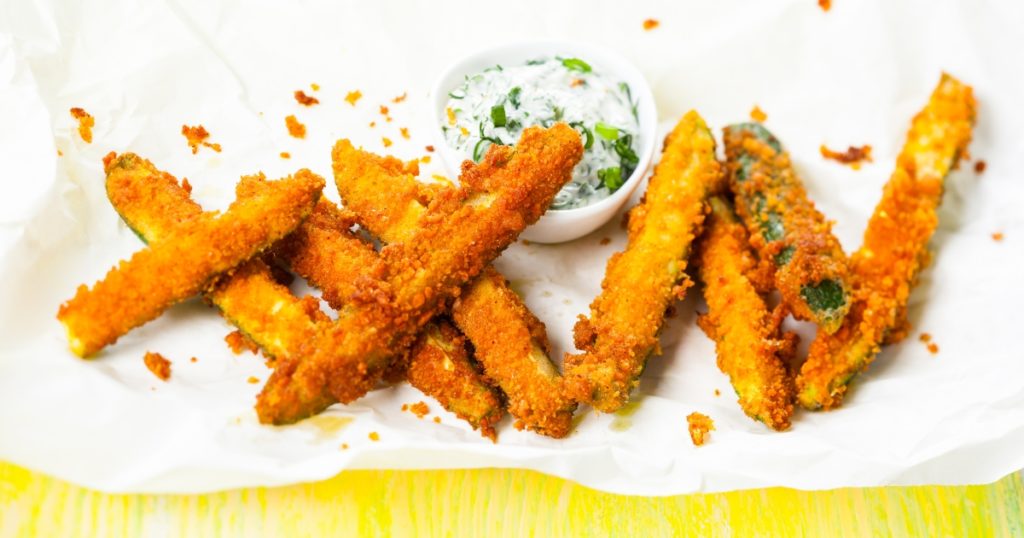
Another good thing about breading is that it helps keep food moist when you deep-fry or pan-fry it. Of course, although breaded food is typically fried (even in an air fryer), you can also bake these foods and get good results.
How To Bread At Home – Things To Prepare
These are what you need to bread foods.
Ingredients:
- Food to be breaded (i.e. chicken cutlets)
- Flour
- Beaten eggs
- Bread crumbs, panko breadcrumbs, crushed crackers, or other types of dry ingredients for the breading
- Optional ingredients are salt and pepper, or parmesan cheese, if you want to have seasoned breadcrumbs
Equipment:
- Three shallow bowls or dishes
- A fork or a whisk
- Food processor, if you plan on making your own bread crumbs
- Tongs to handle the food
- Baking sheet or wire rack (only if you’re breading in advance)
- Deep fryer, pan, or air fryer (for cooking the breaded food)
The first step in breading anything is to prepare the food properly, whether you need to clean it, cut it up, or even season it to your taste. Take note that if you’re breading meat, pound it thin so it gets cooked all over. Ensure also that the food is as dry as possible, as excess moisture will prevent the breading from sticking properly to your food.
Now, remember our blog article about the best kitchen tips for beginners? You have to have your equipment on hand so that the entire procedure goes as smoothly as possible and you don’t get rushed or panicked.
Get your three bowls or dishes. Designate one for flour, one for beaten eggs, and one for your dry ingredient for breading, then fill them up. You’re now ready for the actual breading process.
How To Bread Food: The Three-Step Process
The usual or standard breading procedure is a three-step process. Basically, you first roll the food in some flour. Once the food is completely dredged in flour, you then dip it in beaten egg. Finally, you coat it in bread crumbs.
Do take note that this is a standard procedure. This may not be applicable if, say, you’re looking for steps on how to bread chicken for Chinese food. Got it?
Here’s a more in-depth look at this procedure.
Step 1: Coat the Food in Flour
The first step in the breading process is to coat the food in flour, then make sure to shake off any excess flour. Doing this will help the egg wash adhere to the food. It also creates a barrier between the food and the crumb coating you will make in the next few steps.
Step 2: Dip the Food in Egg Wash
Get your food dredged in flour and then dip it into your beaten egg bowl. This is important to let the dry ingredient of your choice stick to the food and so you’ll get a crispy crust. Make sure the food is fully coated in the egg wash.
Step 3: Coat the Food in Breadcrumbs
Here’s the last step: coating in breadcrumbs! If you’re wondering how to coat food with bread crumbs, the last two steps were the key. If you skipped them, there’s no way the crumbs will stick to your food.
But since you didn’t, you only have to press the crumbs gently on the food’s surface until they stick. And that’s it–you have successfully breaded food!
Can You Bread Food Without Eggs?
You might have an egg allergy, dietary restriction, or ethical reasons, so you can’t have eggs. So can you bread food without using any eggs? The answer is yes.
How to bread food without eggs, you ask? Instead of using beaten eggs, substitute it with an egg wash made with flour and water. It’s thick enough to use as a paste, which you can use in Step 2.
Can You Bread Something Without Flour?
What if you don’t have flour? Well, you can bread something without flour. Instead of dredging the food in flour, use seasoned bread crumbs or panko breadcrumbs.
You can also try using baking powder, baking soda, or simply just pressing the meat over the crumbs until it’s fully coated. Hey, it works!
Tips and Tricks for Perfectly Breaded Food
Here are some things to keep in mind as you dredge and bread:
- If you want a really crispy coating, ensure the ingredients you use for your breading are dry.
- If you want extra crispy breading, re-do steps 1 to 3.
- Designate one hand as your dry hand for the dry ingredients and the other as your wet hand for the wet ingredients to avoid clumping and mess.
- You have many options for dry ingredients for breading. Choose from tempura, nuts, and even cornflakes. Just make sure they will enhance the flavor of what you’re cooking!
- For gluten-free breading (but not keto), you can use gluten-free flour, chickpea flour, coconut flour, cornstarch flour, cornmeal, and many other options in the market.
- If you forgot to buy bread crumbs or dry ingredients and you’re wondering, “Can I use bread as bread crumbs?”, well, you can! Simply place the bread in a food processor and pulse until you get fine crumbs.
Cooking the Breaded Food
Once your food is breaded, it’s time to cook it. The cooking method will depend on the type of food you’re making and the recipe you’re following, but some popular options include frying, baking, and air-frying. Whichever method you choose, be sure to preheat your cooking surface and oil or spray it with non-stick cooking spray.
Here are some tips for better cooking of your breaded food:
- Chilling breaded foods in the fridge before frying or air-frying will help the breading stay on the food. That also means you can bread food in advance. However, also take note that if the breaded food stays too long in the ref, it won’t be that crispy since it will absorb water and get soggy.
- When you’re cooking, keep an eye on your food to prevent it from burning. It will depend on the thickness of the food, but generally, each side should take 2-5 minutes before being cooked. A good sign is if you have achieved a golden-brown color.
- The amount of breading you use will depend on the recipe you’re following, but having more than what you need makes it easier for properly coated food.
- If possible, use a pressure cooker or the sous vide avant-garde method to cook breaded food to help to keep the coating crispy and prevent it from falling off.
- If your cooking method is deep drying, ensure the oil is hot enough before placing the food in the pan so that the coating doesn’t become soggy.
Final Thoughts
Breading is a simple yet effective way to add both flavor and texture to your food. It’s pretty simple to do and can be done on different kinds of food. However you plan to cook the food, just have the correct ingredients and follow the standard breading procedure. Give it a try and enjoy delicious, crispy, crunchy, and perfectly golden brown food every single time!
Want To Try Breading At Home?
Now you might be wondering how to bread something, and you’re looking for more than just making the usual fried foods. Well, we have a suggestion: why not try making corn dogs?
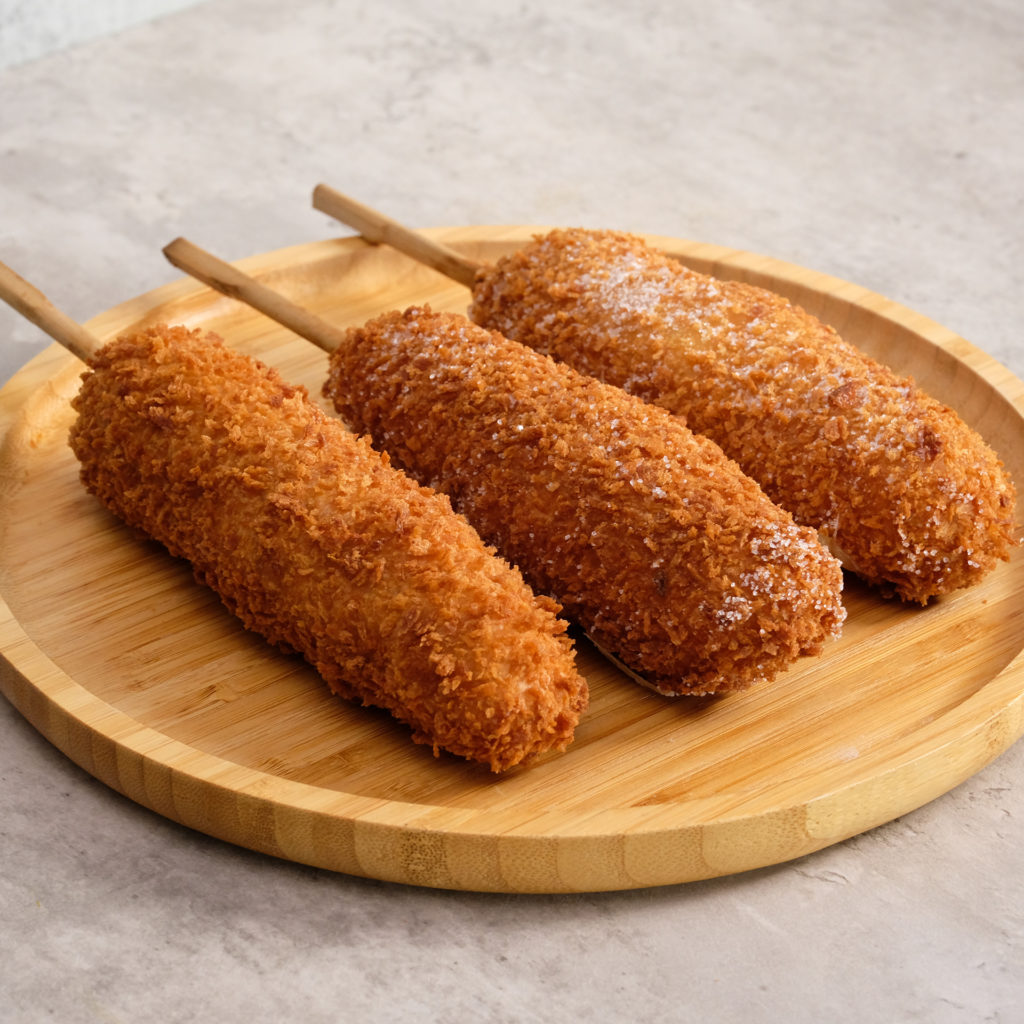
If you’re like plenty of Pinoys who love all things Korean, like K-Pop, K-dramas (historical and otherwise), you’d likely love eating corn dogs too! That’s especially if they keep showing up in your favorite television series.
You won’t have a hard time making them, even if it’s your first attempt to bread anything…that is if you enroll in our latest class with Sir Rodney Martinez: K-Dog Express!
Take this course, and not only will you be able to try out your breading skills, but you’ll also be able to try breading with noodles, chips, and other ingredients! These corn dogs also come in more than one flavor–it’s definitely not going to be boring! And, of course, it helps that you get a bonus recipe for crispy Korean fried chicken, agree?
Plus, if you feel like you’ll have difficulty assembling the food or achieving a crispy coating, don’t worry. Sir Rodney has ensured that you’ll have easy-to-follow instructions in his video and plenty of cooking tips. You won’t need any advanced knife skills or anything like that to achieve delicious results!
Oh, and by the way, corn dogs aren’t popular yet in the Philippines. So why not enroll and be one of the first to make a corn dog food business?
Don’t delay: sign up at The Bailiwick Academy today and start making these fun treats!
—
Keep coming back to The Bailiwick Academy blog for more kitchen tips, tricks, and much more!
]]>“But Grace, I’m fine! I’m a strong woman! I don’t need to relax! Besides, there are bills to pay. I can’t afford to rest!”
I used to tell myself those same things all the time. But then I got burnt out from all the overworking I did, and started to experience both physical and mental challenges.
It got to the point that I just wanted to collapse on my bed, cover myself with blankets, and just not do anything.
It was THAT BAD.
But of course, I can’t do that. I have a family, responsibilities, a business to run, and so on. And that’s why I started looking for techniques to relax my anxiety.
Here are five that worked for me. For me, they are ways to relax instantly! Try them out and let me know if they worked for you.
Technique to Relax 1: Just take deep breaths.

You may not pay attention to your breathing all that much – after all, it’s something that’s automatic. But did you know that breathing helps you reduce stress?
Wait, why is breathing an essential part of relaxing?
Well, according to the American Institute of Stress, breathing from your abdomen from twenty to thirty minutes each day reduces your anxiety and stress. It will increase the oxygen supply to your brain and stimulates the parasympathetic nervous system, which will help you feel calmer.
Right as Rain further adds that by breathing slower and deeper from your stomach, you actually send a signal to your nervous system to calm down.
In short: deep breathing can lessen stress and anxiety.
Do take note that you don’t have to be into yoga or something related just to be able to do breathing exercises and techniques. Also, it does take practice – it won’t help you immediately.
Take the time to schedule it deliberately throughout your day and make it a habit. I take the time to do this every end of the day and it just works really great for me. But I had to make it part of my routine for it to take effect.
Finally, there are plenty of breathing techniques to relax anxiety – try them all and see which one works best for you.
Technique to Relax 2: Get a massage.

I definitely recommend getting a massage as one of the techniques to relax your body. And not only will your body feel relaxed, but your mind also will too! How does that happen, you ask?
The Mayo Clinic says that getting a massage has plenty of benefits, including:
- The reduction of stress, pain, muscle soreness, and tension
- The improvement of circulation, energy, and alertness
- A lowered heart rate and blood pressure
- An improved immune function
And not only that, but massage can also help fight off anxiety, headaches, insomnia related to stress, and more!
You’ll also get a pleasant emotional response since the massage will relax your body via increased blood circulation and plenty of released endorphins.
I personally get at least one massage a month – and it feels so good! No need to go to a fancy spa. Just schedule a session with your friendly-neighborhood masahista to go to your house.
You’ll be glad you did!
Relaxing Technique 3: Write things down.

Have you ever been told that if you have bad feelings to just write them in a notebook to help you process things?
Well, this technique personally works for me! I write down all my negative feelings. And when I release them on my pad or notebook, I automatically feel much better. A formal term for this exercise is called mood journaling.
I’m not a psychiatrist or an expert in mental health, but basically, when you do this, you get to understand your thoughts and feelings more clearly. It’s a great way for me to control my emotions and improve my mental health – I highly recommend you try it for yourself especially if you’re feeling plenty of negative feelings.
Try not to worry about your grammar or if what you’re writing makes sense or if you’re writing neatly. What’s important is that you’re able to let go of all things bad. Express yourself.
I promise you’ll feel much better.
Relaxing Technique 4: Go out.

For me, one of the best tips to relax and unwind is to just get out of the house, especially if work is done inside the house most of the time. So home bakers, this is the sign you’ve been looking for:
Hang up your apron, put on some outside clothes, and just go wherever you want to go! It can be the mall, like how my daughter and I visited Chef Ely Salar’s shop in The Podium. Or it can be nature, as Healthline suggests.
The point is to just get your mind off of the things that stress you out. You don’t even have to spend money if you don’t want to. Just getting out of a stressful environment will do wonders for your mental health.
And once you come back, you’ll find that you’re actually thinking much clearer than before you went out. So if for example you’re working on one of our classes and are unable to get the technique down, you might have better luck if you go out first.
Don’t knock it until you’ve tried it!
The fifth of the techniques to relax that I especially love: Baking bread.

Now, I know I said that leaving the kitchen will help you relax, but I’ve also found that baking bread can be quite therapeutic in my case. Why?
There are plenty of reasons. For example, the measuring and following recipes that I have to do to make bread are calming. That’s because it’s a routine, and having a routine helps relieve stress.
The routine also helps me feel that I am in control, which is a great way to combat anxiety. After all, we feel anxious the most when we feel like things are out of our control, right?
Also, baking just puts me in a zone where I forget everything that’s not related to what I’m doing right now. I become more mindful if you will.
Finally, looking forward to the delicious output after our hard work is something that is definitely stress-relieving, wouldn’t you agree?
And hey, if psychologists confirm this, who are we to argue, right? Let’s just go bake some bread!
Speaking of techniques to relax and baking bread…
If baking bread is what you need, then enrolling in The Bailiwick Academy is perfect! We have plenty of bread classes for you to try, like Keto Bread, Commercial Breads, Asian Breads, Spanish Bread…
And of course, our latest class offering from Chef Joey Prats: Crusty European-Style Whole Wheat Bread!
In this class, not only will you feel relaxed (because as mentioned above, baking can be therapeutic), but you’ll also learn how to make quality, high-end artisan bread! Chef Joey will share with you his recipe that is fantastic even for beginners: it’s simple, easy to do, doesn’t require any special equipment, and can be used to produce a variety of whole wheat bread variants!
And most importantly, you’ll be able to taste bread that has a moist, chewy interior with a crisp crust. It’s great for sandwiches for your family and even for your food business!
So what are you waiting for? Get some relaxation and artisanal bread. Sign up at The Bailiwick Academy today!
—
Keep coming back to The Bailiwick Academy blog for more kitchen tips, tricks, and much more!
]]>Our list of much-desired buffet food items
Just think of this list this way: given a choice, what food would be on our buffet table? Random spoiler: carrot cake and salad buffet items are not on this list. Sorry, vegetable lovers.
1. Ebi Tempura

This tops our list because Ebi tempura is one of the best things we have ever tasted. And Ebi tempura is one of the Japanese buffet items that is also one of the most popular buffet items ever! Once the chef finishes cooking the Ebi tempura, people descend on the serving tray. And it’s soon as empty as if the chef never cooked anything! But we really can’t blame people for liking it. The breading, the shrimp, the sauce… It’s just really delicious, with or without rice.
2. Bacon
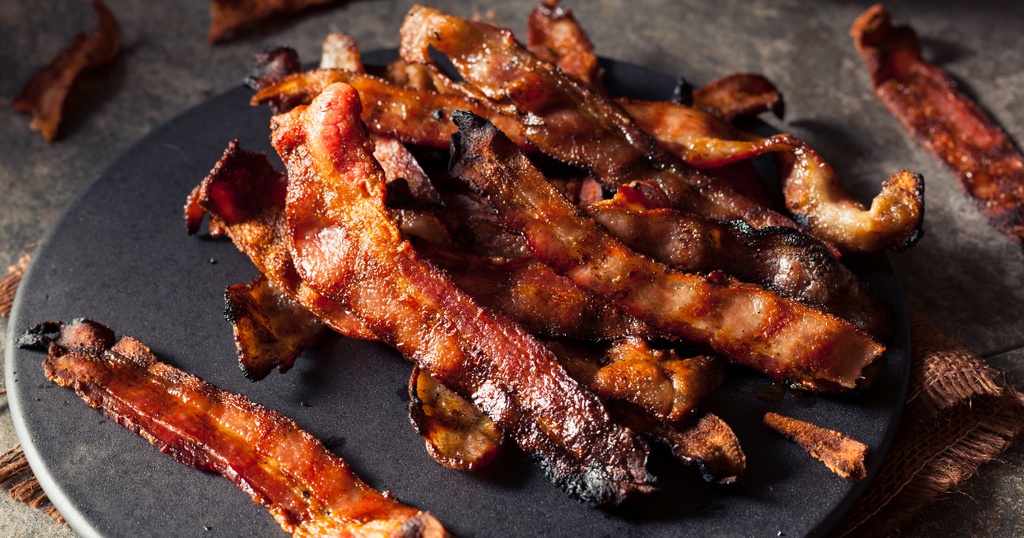
If you’re going to ask us what’s one of the best breakfast buffet items we miss eating, we’d answer bacon! In fact, we’d actually say that along with Ebi tempura, bacon is one of the best buffet items ever. I think a lot of people would agree. Why do you ask? Well, bacon is one of the items that runs out right away. We can’t count how many times we’ve experienced looking for bacon and finding the tray empty. Unlimited bacon is a must for us on buffets.
3. Puto Bumbong
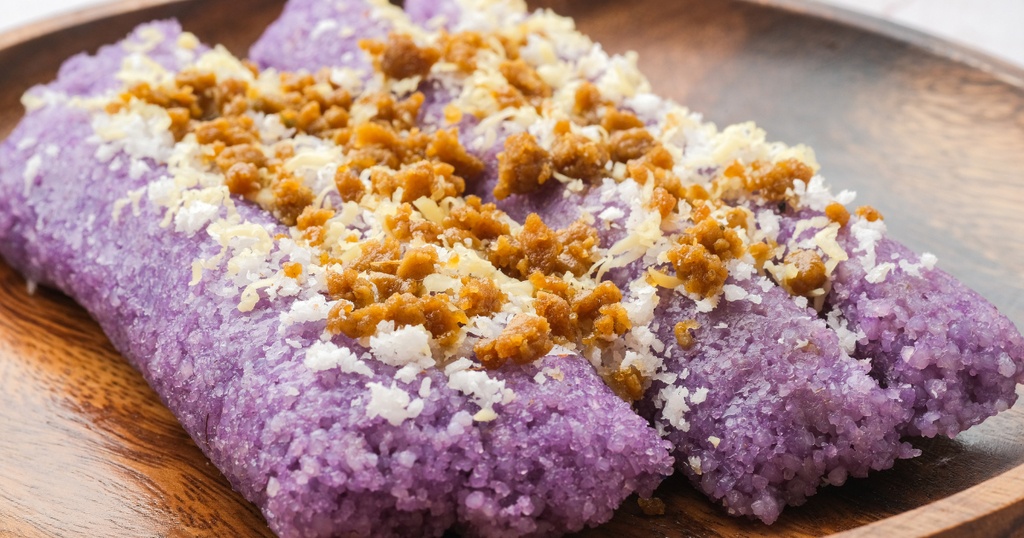
We’ve talked about puto bumbong before. We guess that tells you we really like it! It’s one of those most-have Christmas buffet items. Just writing about this treat eaten with lots of shaved coconut and brown sugar is getting us craving for it. We like it so much, we wish puto bumbong is one of the standard buffet items. Any restaurant here planning to bring out Xmas buffet items anytime soon? We might feel brave enough to go!
4. Cheese Buffet
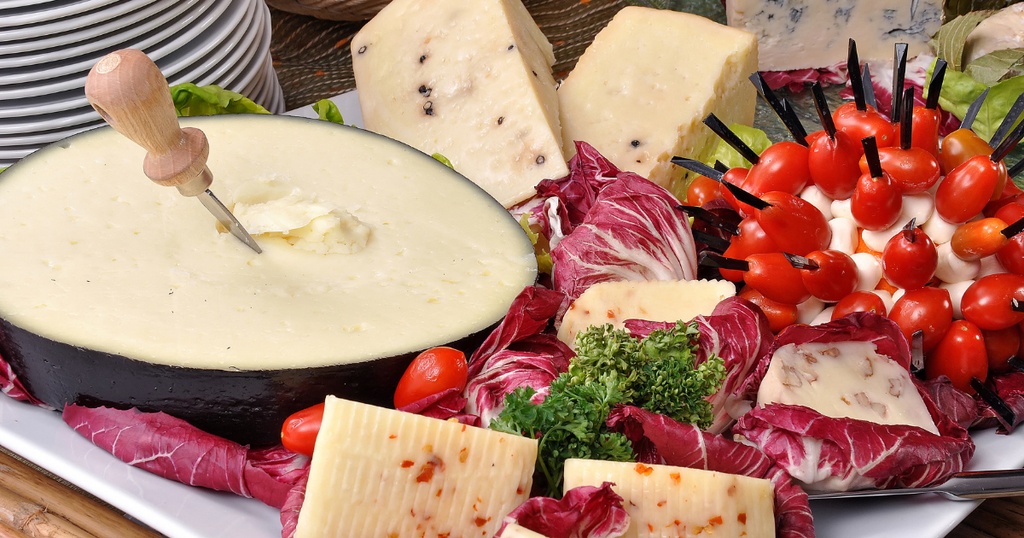
This might not be a usual choice, but hey, who doesn’t love cheese? Eat it with ham, bread, dried fruit, or crackers. You can also eat it just by itself, then wash it down with wine. It’s a yummy experience. We miss having access to all sorts of cheese in buffets. Brie, blue cheese, gouda, goat cheese… Each one has a unique, distinct flavor, and it makes us happy being able to eat different varieties. It also helps that the different cheeses are luxury buffet items, making us feel… rich. LOL. Did we mention we miss the cheese in buffets?
5. Roast Beef
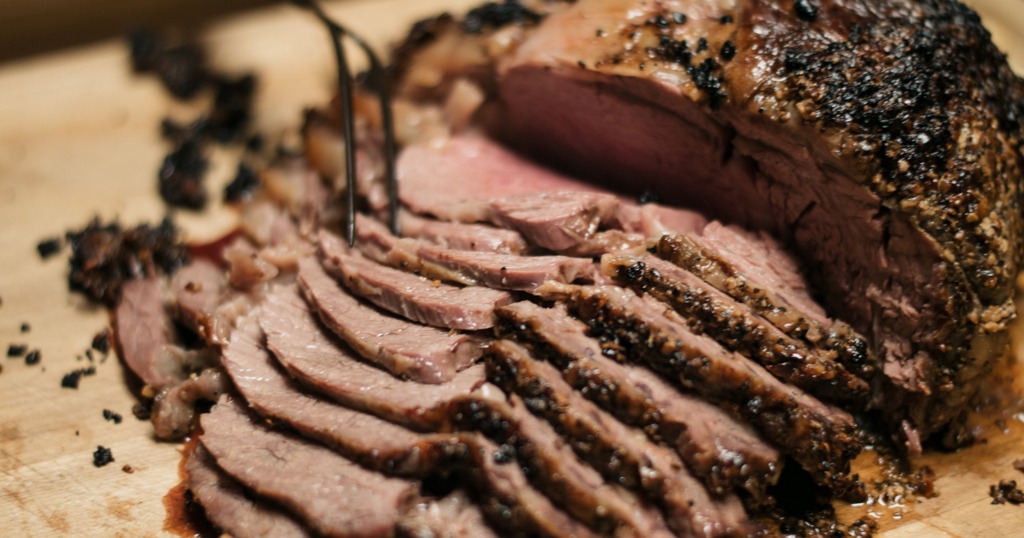
One thing we definitely miss is heading over to the carving station and getting roast beef. We usually get three slices of thick, juicy beef, then slather them with a lot of gravy. After eating them, we take a break, then head back for more. Hey, it’s roast beef. It’s not something you can get every day. Can you blame us for taking advantage of it being unlimited?
6. Halo-halo
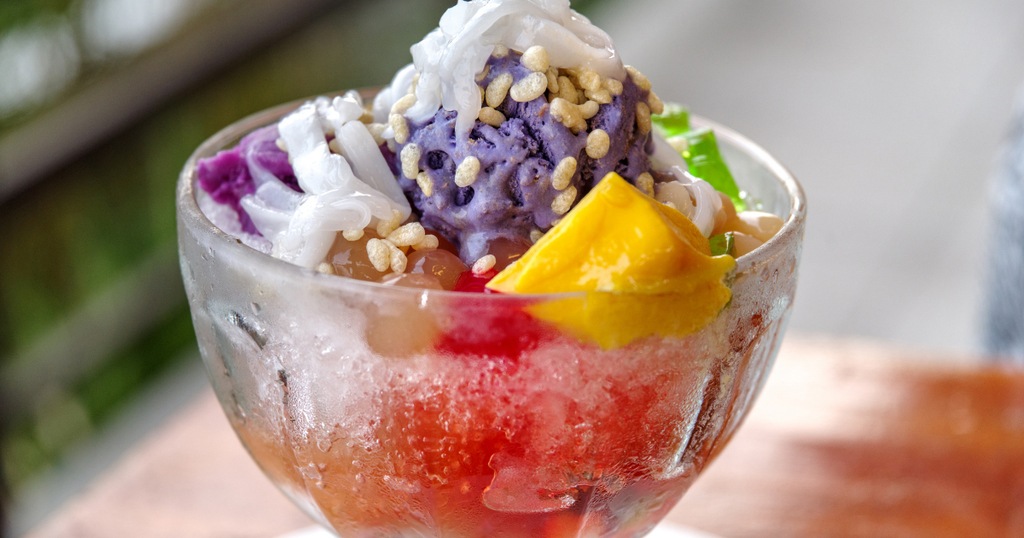
Here’s something else you won’t get every day: the super delicious halo-halo! Halo-halo is one of the classic buffet items in any Pinoy-themed ones. We can’t wait for the day where we can just mix all the ingredients, finish one glass, then come back for another. Or two. Sorry, halo-halo is just really delicious and such a treat. It’s one of the great buffet items on our list.
7. Sushi and Sashimi
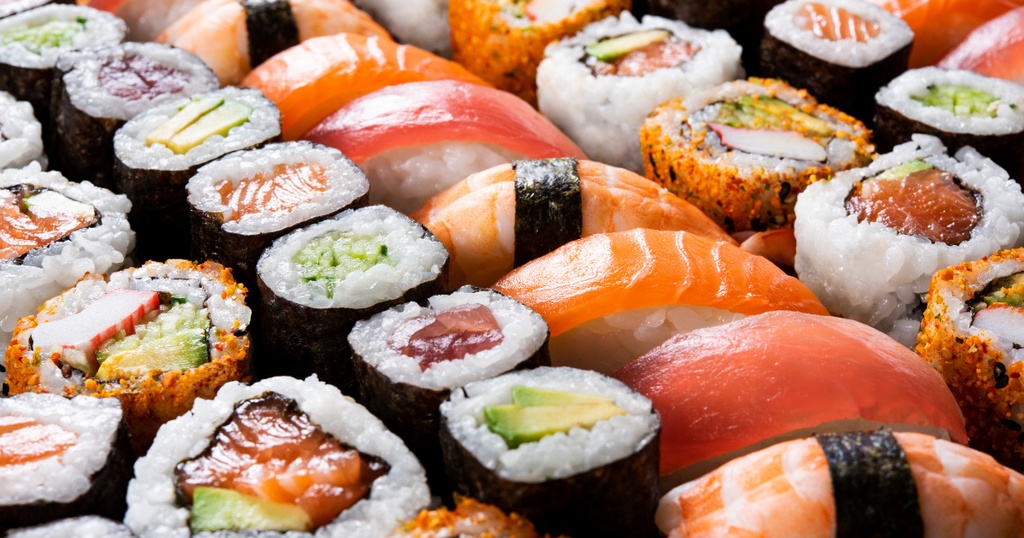
We know, we know. This is the second Japanese food item on the list. We just prefer Japanese to Chinese buffet items. And of course, sushi and sashimi are always welcome in our tummies! We just really love the rice mixed with all sorts of delicious ingredients! And also the raw seafood! You can’t just get that anywhere. And you can be sure with buffets, you’re getting the quality kind of raw food.
8. Bread Buffet
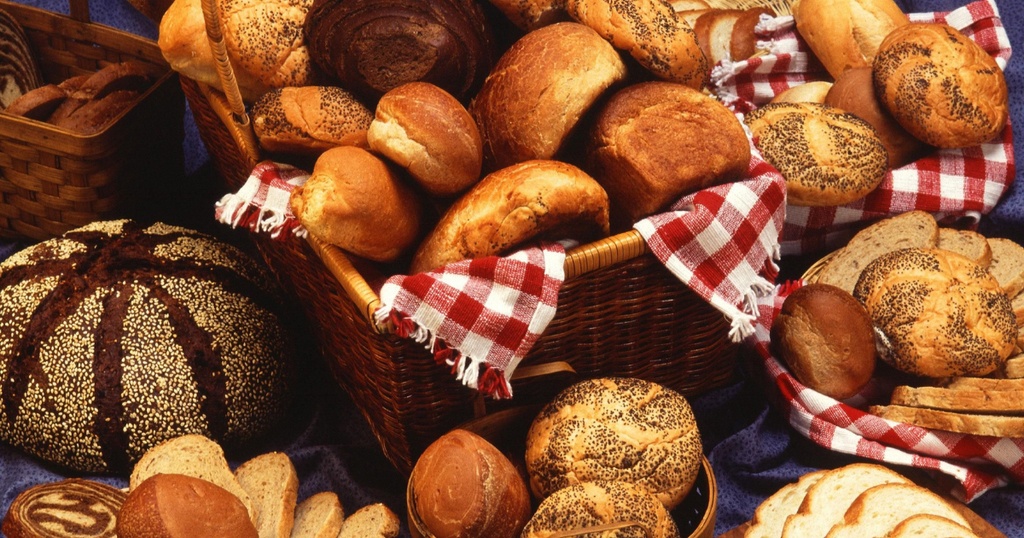
What makes bread in buffets different from the ones we have at home? We also don’t know. What we do know is that they taste great, and we have our pick of bread! You have the standard loaf bread, but there’s also pandesal, baguette, croissant, and so much more! We also have the option of slathering the bread with butter or jam. Toasters are right next to the bread station, so we can even warm them up! Ahhh, we miss bread buffets.
9. Candy Buffet Items
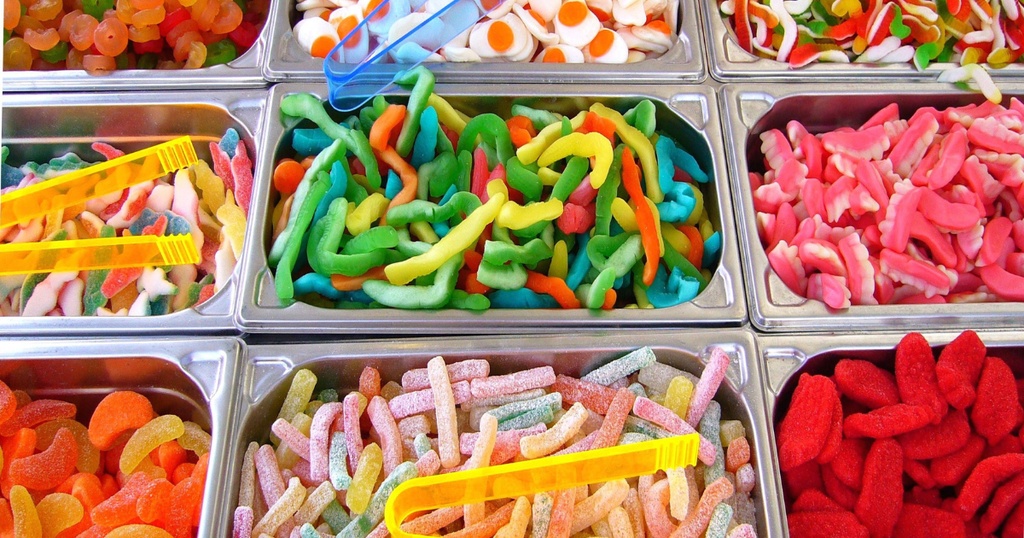
We know, we should be watching our sugar. But with candy, we can’t help ourselves! It’s like we become kids again whenever there are sweets. And we also can’t just focus on any of the candy buffet table items. We have to get everything. If we remember correctly, usually there are gummy worms, hard candies, marshmallows, lollipops, and chocolate candies.
10. Dessert Crepes
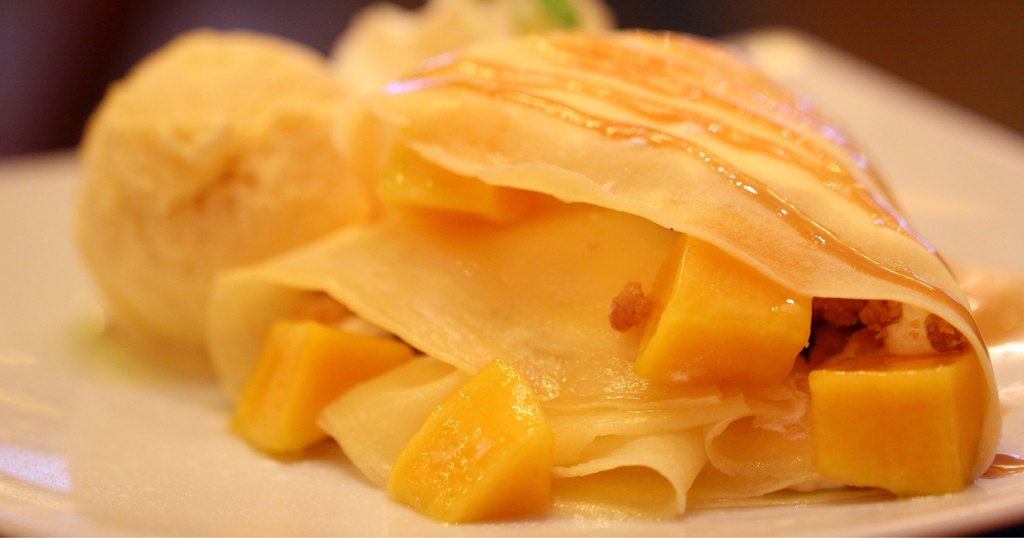
Here’s another personal favorite from different dessert buffet items. We miss eating this thin version of pancakes, stuffed with fresh fruits and cream, and slathered with chocolate or caramel. Sometimes, you can even have ice cream served with it! It’s also an experience watching the chef making the crepe. It will take time but you know this treat is worth the wait.
These are the top 10 buffet items that we just love and really miss eating. How about you? What buffet food items are your personal favorites?
On a personal note, while COVID-19 is still a threat, it’s still kind of scary to eat at a buffet restaurant. Hopefully, government vaccinations roll out faster, so we can be more confident to eat at restaurants. So, fingers crossed for all of us who just want to go out again. In the meantime, to make delicious and restaurant-quality food, enroll now at The Bailiwick Academy!
]]>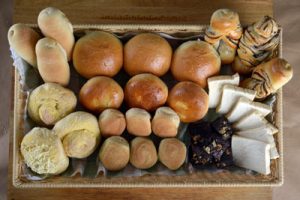
The local Panaderia has been a community landmark for generations. It started out as a Royal bakeshop of the Spanish Government catering to our Spanish Colonizers who missed the breads they had from their motherland. Now, every morning ordinary people line up to purchase the timeless classic the Pan De Sal (bread of salt) served hot and also from time to time buy other baked good unique only to the Philippines. In this two-part blog we will cover the most popular ones and include a bit of back-story to your favorite breads.
Ensaymada
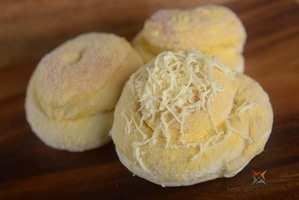
Usually taken as an afternoon snack. This coiled bred sprinkled with sugar and cheese toppings is the perfect partner with hot cocoa. This treat we inherited from our Spanish colonizers and was called “ensaimada de mallorica” which is a yeast bun with sprinkled sugar.
Monay
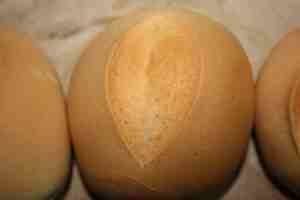
An alternative to the king of Pinoy bread. The monay is a yellowish bread with a slightly hard crust but with a soft inside when opened. Enjoyed best by dipping into hot coffee. Originally called pan de monja( nun’s bread), it is said that the bread’s shape is a raunchy take on the nun’sbehind
Spanish Bread
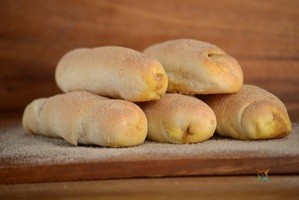
Some say this soft-elongated bread with a sweet center made of butter and sugar and sprinkled with bread crumbs is a tribute to our Spanish roots though no mention of its exact origins are told in our history books.
Putok
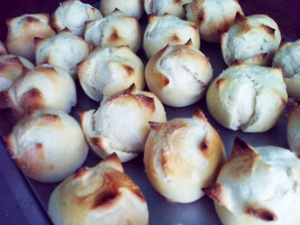
Putok is made from extra monay dough and can have a soft-to hard outer crust. Grooves are purposely cut on top of the bread to allow the bread to expand further during the baking process. It is finally brushed with a sugar or sometimes milk glaze for the added flavor.
Cheese bread/rolls
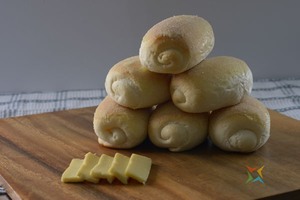
This is a more modern creation encrusted with toasted cheese/bread crumb granules and has a soft, almost dry interior. No records of its origin has been found only that bakeries in Metro Manila started to introduce this product in their wares.
Pan de Coco
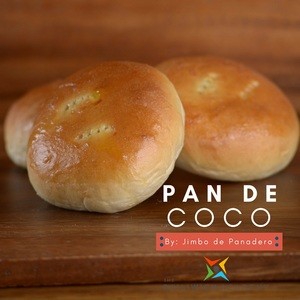
This bread is made with a very Filipino ingredient as its center. Inside the tender bun is sweetened coconut. The filling can be prepared in its natural state (so it retains its color), with yellow food color or as dark as a brown sugar bukayo.
This ends the first installment of the Pinoy Bread series. We will cover the rest of the popular pinoy breads on the Sunday installment of our regular blog posts. you can also check out our wonderful online classes that teaches most of the breads covered. Click on this link to view the classes.
As always please leave a comment or any suggestions of future topics you would like us to cover.
The Bailiwick Team
]]>